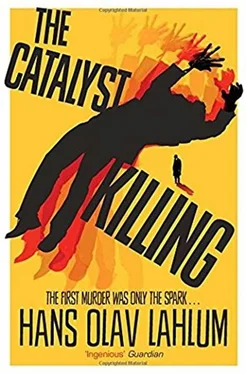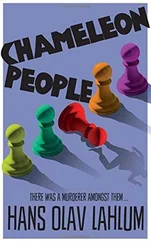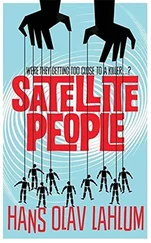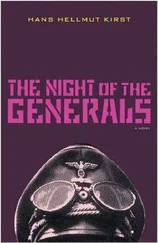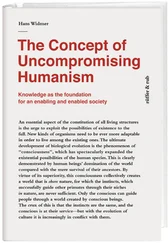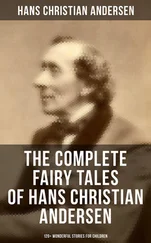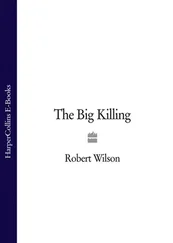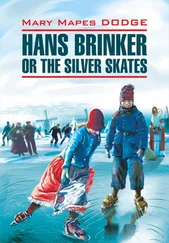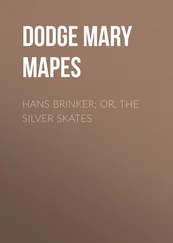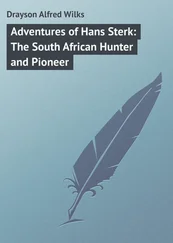Falko had explained that one of the sources made things a bit complicated, but assured the professor that this was something really big. He had seemed uneasy, almost frightened, in a way that his supervisor had never seen before. On his way out, Falko had said in a quiet voice that he now seriously feared for his own safety. The professor had asked if he was talking about the Nazi network. Falko had replied that the right-wing extremists were a possible danger, but with a self-deprecating smile he had added that he no longer felt safe with left-wing radicals either.
And they were the last words he had heard Falko Reinhardt say, the professor remarked gloomily as he puffed on his pipe. He had more or less dismissed the comment about left-wing radicals as a joke. But he regretted not taking the information about the Nazi network more seriously, and still believed that there had to be some kind of connection with Falko Reinhardt’s disappearance. He had, without much joy, tried to explain this to the rather unappealing young detective inspector who investigated the disappearance, he added.
I nodded cautiously in agreement. It was easy to believe that Detective Inspector Danielsen had not found the right tone as easily with the radical professor as he had with the reactionary bank manager Martin Morgenstierne.
The first draft of Falko Reinhardt’s thesis, around ninety pages long, still stood between two thicker works on Professor Heftye’s shelf. He assured me that he had a copy stored away safely at his house, and handed me the thesis as soon as I asked if I could borrow it for the investigation. He added that it was a pleasure to meet a policeman who appreciated the value of history. I was more than welcome to contact him whenever I wished for further information. I thanked him, picked up the thesis and beat a hasty retreat.
I sat in my office from half past eleven until one, reading through Falko Reinhardt’s draft thesis. The text was incomplete; a conclusion and several chapters were still missing. However, this did not detract from the impression that the author was intelligent and had a flair for language. Some of Falko Reinhardt’s charisma as a speaker also shone through in what he wrote.
The topic was definitely interesting, not only in terms of the current murder investigation. In the body of the thesis, Falko Reinhardt described the activities of a network of Norwegian Nazis from the upper echelons of society in eastern Norway. He had also started to work on an annex about how parts of the network had remained active throughout the 1950s and 1960s. And it was hinted quite heavily that members of the group had not just met, but had also remained politically active and had discussed possible new actions. However, what this meant in practical terms was not specified in the text and no sources were given in the annex. It was thus unclear what sort of activity they were engaged in or where Falko Reinhardt had found the information.
‘The wealthy farmer Henry Alfred Lien, from Vestre Slidre in Valdres’ was mentioned as a secondary character and local contact for the network during the war. He did not, however, appear to have played a leading role at that time, nor was he mentioned in connection with activities after the war. According to the draft, ‘the Big Four’ were the architect Frans Heidenberg, the company director Christian Magnus Eggen, the shipowner Lars Roden and the landowner Marius Kofoed, all from the west end of Oslo. Both their names and professions were decidedly upper-class. I immediately went to find the relevant files in the treason trial archives and police records. They, too, proved to be interesting reading.
Henry Alfred Lien had been an active local leader and spokesman for the Nasjonal Samling, and had been sentenced to six years’ imprisonment after the war. He was released in 1948.
The shipowner Lars Roden had also been a member of the NS, and had furthermore placed his ships at the disposition of the occupying forces. He was sentenced to five years’ imprisonment, but released in autumn 1947 due to ill health. He died two years later.
Marius Kofoed, the landowner, appeared to have been the one with most contacts in the NS and the occupying forces. He had, among other things, allowed his property to be used for troop mobilization and celebrations arranged by the NS. He was also deemed to be a personal friend of Quisling. Kofoed could most certainly have expected a stiffer sentence after the war had he not been liquidated by anonymous perpetrators in January 1945. There was a short statement in his papers to say that the murder had in all likelihood been carried out by members of the Home Front, and that further investigation was not advised.
The architect Frans Heidenberg was also a man who had moved in Nazi circles, but his role was harder to pin down, other than being a member of the NS and designing some large buildings for the occupying forces. He had got away with only two years’ imprisonment after the war and had been released in autumn 1946.
The company director Christian Magnus Eggen had run his own business trading in jewellery and gold, with extensive dealings in Germany both before and during the war. He had also been a member of the NS, but had not had any formal responsibility. Despite a note to say that he was a friend of Quisling, he had got away with three years’ imprisonment and been released after two for lack of any more serious indictments.
In later files from the census rolls, Frans Heidenberg and Christian Magnus Eggen were recorded as having private addresses in Skøyen and Kolsås. And both were listed at the same addresses and with the same titles in the telephone directories for Oslo and Akerhus. According to the files, they were now 72 and 69 years old respectively. I found the lead interesting enough to reach for the phone.
Both Heidenberg and Eggen were at home and answered the telephone themselves. Neither of them sounded particularly pleased that I had called. But both agreed, curtly and correctly, to meet me once I had made it clear that they were not suspected of anything, but that the police would like to ask them some routine questions in connection with an ongoing murder investigation. I promised to do this as quickly as possible and asked that they both stay at home for the next couple of hours.
I then made a short call to the police security service to arrange a meeting with the head of division in connection with the murder investigation, before getting into my car and heading west.
Frans Heidenberg’s house in Skøyen was the largest in the street, and it was not hard to see that it had been designed by an architect. No other houses had seven walls.
My meeting with Frans Heidenberg himself was a positive surprise. He was a slim, suited man with pale hands and greying brown hair, who wore patent leather shoes at home on a weekday. His steps were slow but steady. His handshake was soft and his voice pleasantly relaxed, with perfect grammar and no accent.
Frans Heidenberg explaned that his name came from his German father, but that he himself had been born to a Norwegian mother in Norway and had lived here all his life. He had had his own architecture firm in Oslo since completing his studies in 1928, and had been increasingly successful in recent years. A couple of nephews were in the process of taking over the business, but he still had an office and worked there one day a week. Otherwise, he spent most of his time here in his spacious and comfortable home.
Once installed in the living room, I declined the offer of alcohol or coffee, but said yes to a glass of water. I remained seated while I reflected that my host appeared to be the perfect diplomat, and about as far removed from a stereotypical Nazi traitor as I could imagine.
Читать дальше
